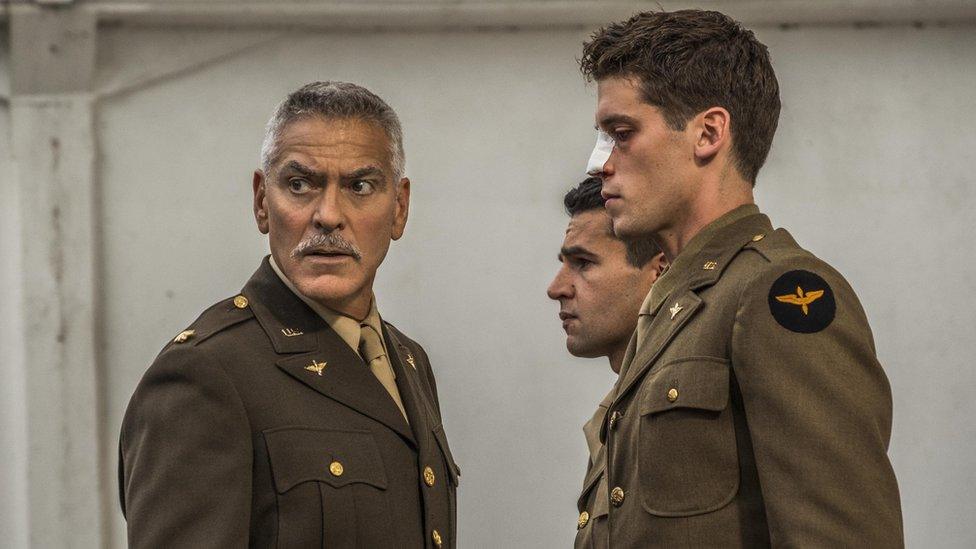Catch-22: Will Gompertz reviews George Clooney's Channel 4 drama ★★★☆☆
- Published
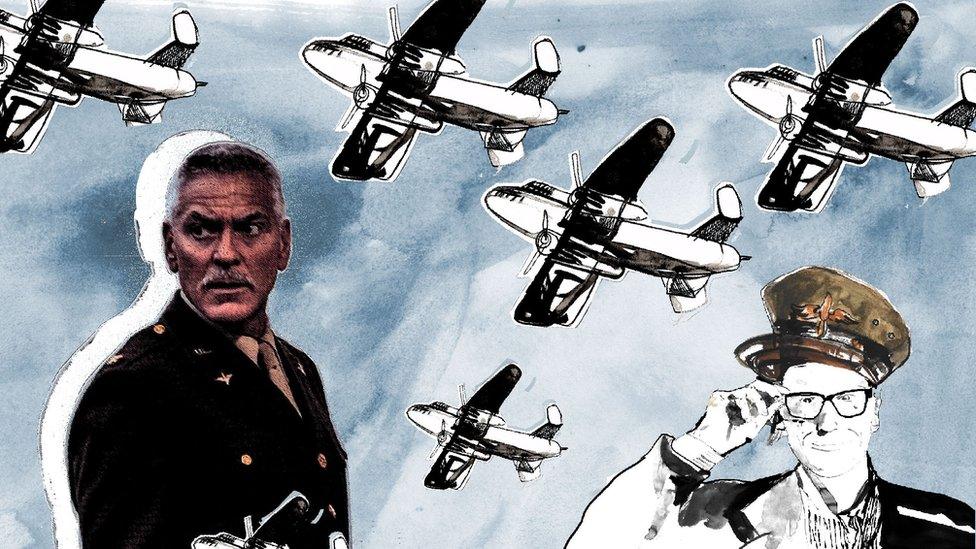
Some things in life are difficult. Like attempting to learn the drums in your '50s, or, consequently, having to readjust to new neighbours. And there are some things in life that are really difficult, like ordering food in an unfamiliar language and then trying to persuade your 10-year-old child to eat boiled goat's testicles in a restaurant without making a fuss.
But there are some things in life considered so difficult that conventional wisdom deems them nigh on impossible. Such as walking on air, or transferring Joseph Heller's 1961 classic novel Catch-22 from page to screen.
Mike Nichol proved the sages right with his unconvincing 1970 film adaptation, but that was before today's golden age of slow-burn television where there is both the time and the money available to tell the fragmented, intricate story of an American Air squadron based on an island off the west coast of Italy during World War Two.

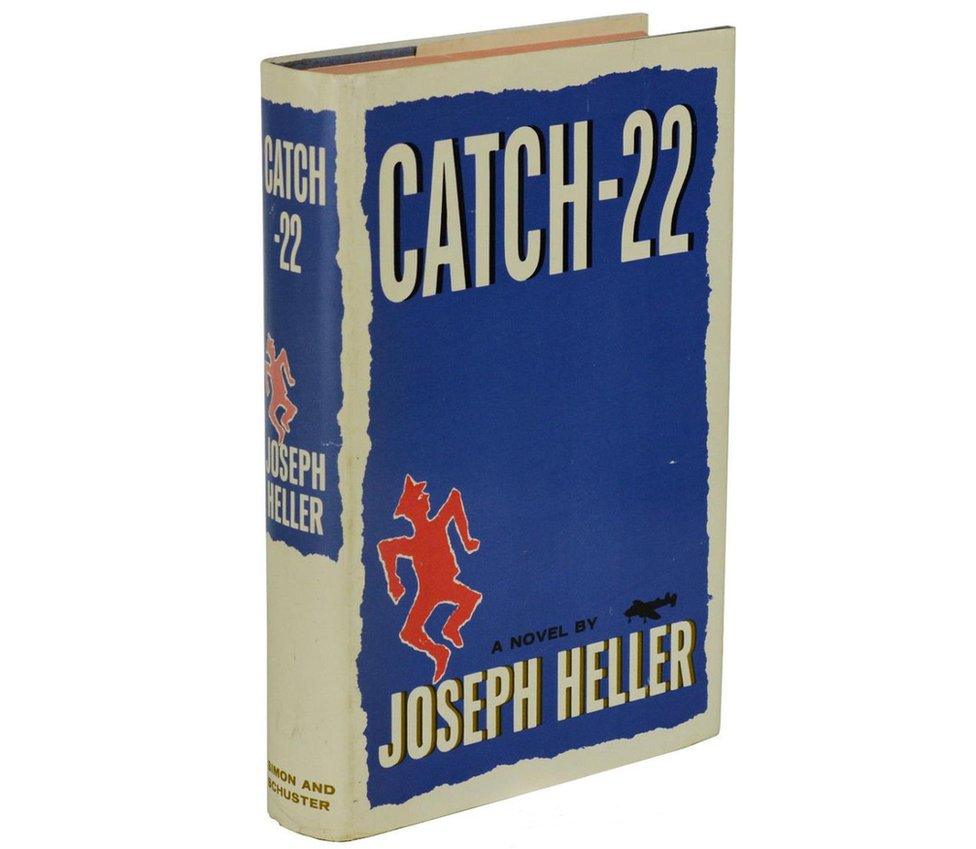
Catch-22 by Joseph Heller was published in 1961, and hailed by one critic as "the greatest satirical work in the English language"


Heller's novel was made into a film in 1970, starring Jon Voight and Anthony Perkins, and directed by Mike Nichols

The good news for the production's backers was the multi-talented George Clooney was willing to help take the strain as a performer, a producer and a director of this Channel 4/Hulu six-part television adaptation by scriptwriters Luke Davies and David Michôd.
Clooney plays General Scheisskopf, a cartoon character of a part, which sees the Oscar-winning actor hamming it up as the cliched all-shouting, all-sneering parade ground bully who yells at those under his command for being a "bunch of pansies" etc.
It is little more than a cameo, but enough I suppose to enable the publicity department to place his face all over the marketing materials.
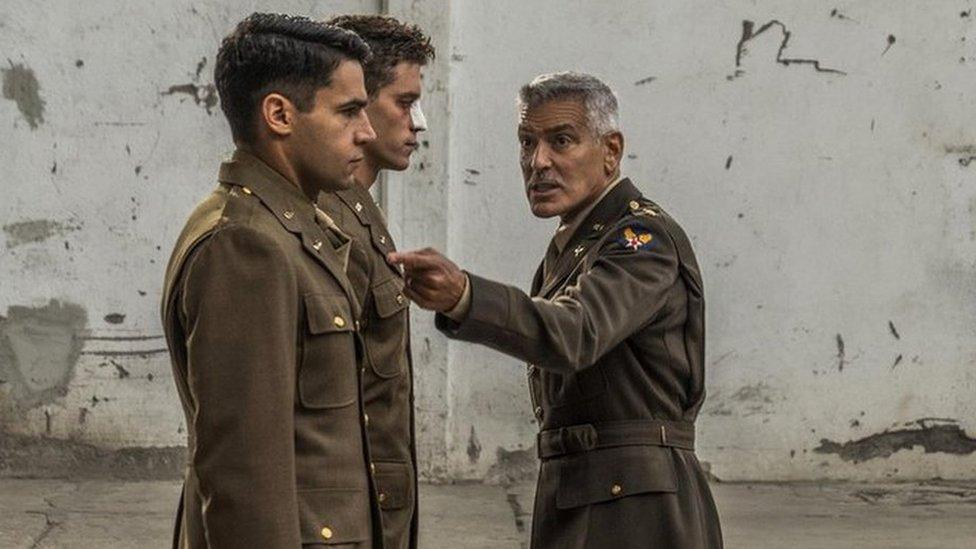
General Scheisskopf (George Clooney) shouting at Yossarian (Christopher Abbott), Clevinger (Pico Alexander)

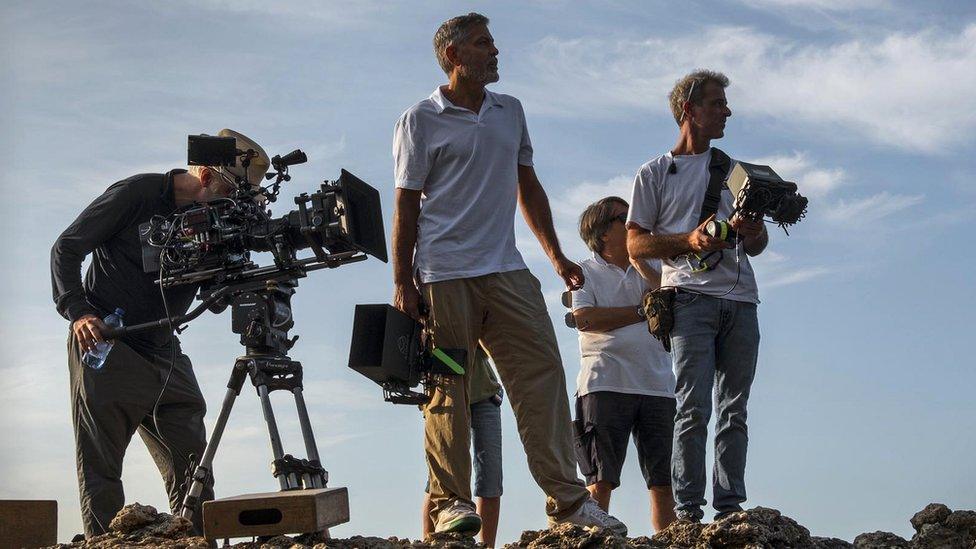
Clooney, who also directed two episodes, says the themes still resonate -- with people fighting "against the system, and the system almost always winning"
Hugh Laurie has a similar sized role as the sniffily detached Major de Coverley, a minor part that also offers slim pickings for another very able actor. But he succeeds, you'll be delighted to see, in wringing every last drop of surreal humour from the pompous patrician whose denouement is to die for, so to speak.
The heavy lifting falls to Christopher Abbott, who puts in an admirably restrained performance as main protagonist and anti-hero: the reluctant B25 bombardier John 'Yo-Yo' Yossarian.
The unwilling serviceman is just about to reach the number of flying missions required to be discharged when the quota is suddenly raised and his homecoming hopes dashed.
Understandably, he is annoyed. And then it happens again. And again.
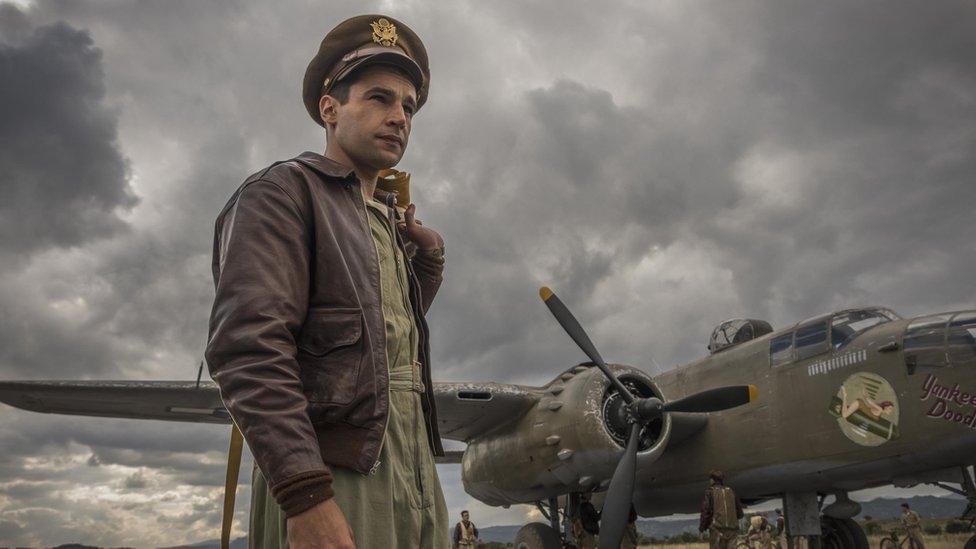
Christopher Abbott plays Yossarian, who is desperate to escape his bomber squadron
In fact, every time he is about to fulfil his perilous airborne obligations the bar is raised and he's back up in the clouds and in harm's way; an actor in the Mediterranean theatre of war, not a player in his local bar.
But then he hears you can be discharged from duties if you are certified insane. So, off he goes to see Doc Daneeka (Grant Heslov) to plead to be signed off.
No can do, the doc says, before explaining that if Yossarian tells him he is so crazy that he must be withdrawn from duty he can't really be mad because requesting to be removed from imminent and obvious life-threatening danger is a wholly sane thing to do.
It's a Catch-22.

Yossarian (Christopher Abbott) tries to persuade Doc Daneeka (Grant Heslov) to declare him insane so he doesn't have to fly more missions
And so the pressure mounts as does the body count and number of missions our gloomy bombardier must fly as decreed by the increasingly maniacal Colonel Cathcart (played by a slightly too absurdist Kyle Chandler).
Yossarian's existential anxiety turns into a tormented inner frustration at the way in which he is convinced the Kafkaesque system is designed to thwart him, deny his freedom of choice, and ultimately lead to his death. Walking back to base one day, he shares his personal philosophy with a colleague:
"The enemy is anybody who's going to get you killed, no matter which side he is on, and that includes Cathcart."
It is a great line taken straight from Heller's novel, to which the TV series is largely faithful.

Kyle Chandler says his character Colonel Cathcart, the base commander who keeps increasing the number of flying missions -- has no "grasp on reality"
But fans of the book might be disappointed by how much of the complexity and texture of Heller's time-shifting, fractured creation has been flattened out by a production team opting for a traditional chronological narrative told from a single perspective.
It is a structural decision that undermines one of Heller's main themes, which is the nature of memory and the notion of deja vu. The linear approach also creates an artistic problem. Heller used repetition both for purposes of symbolism, and also as a central storytelling device. With each shift back or forth in time, he added some new information, which would eventually pay off jokes and plot lines set up long before.
It is that intricacy, humour and authorial dexterity that make the book so rewarding to read. Without those temporal changes the repetition device as deployed in the TV version is less effective, and at worse - as with the majority of flying scenes - boring.
Maybe simplification was the only way Catch-22 was going to work on television. If so, it reflects mess officer Milo Minderbinder's (Daniel David Stewart) M&M enterprise, which, thankfully, brings the book's biting satire to life on the screen.

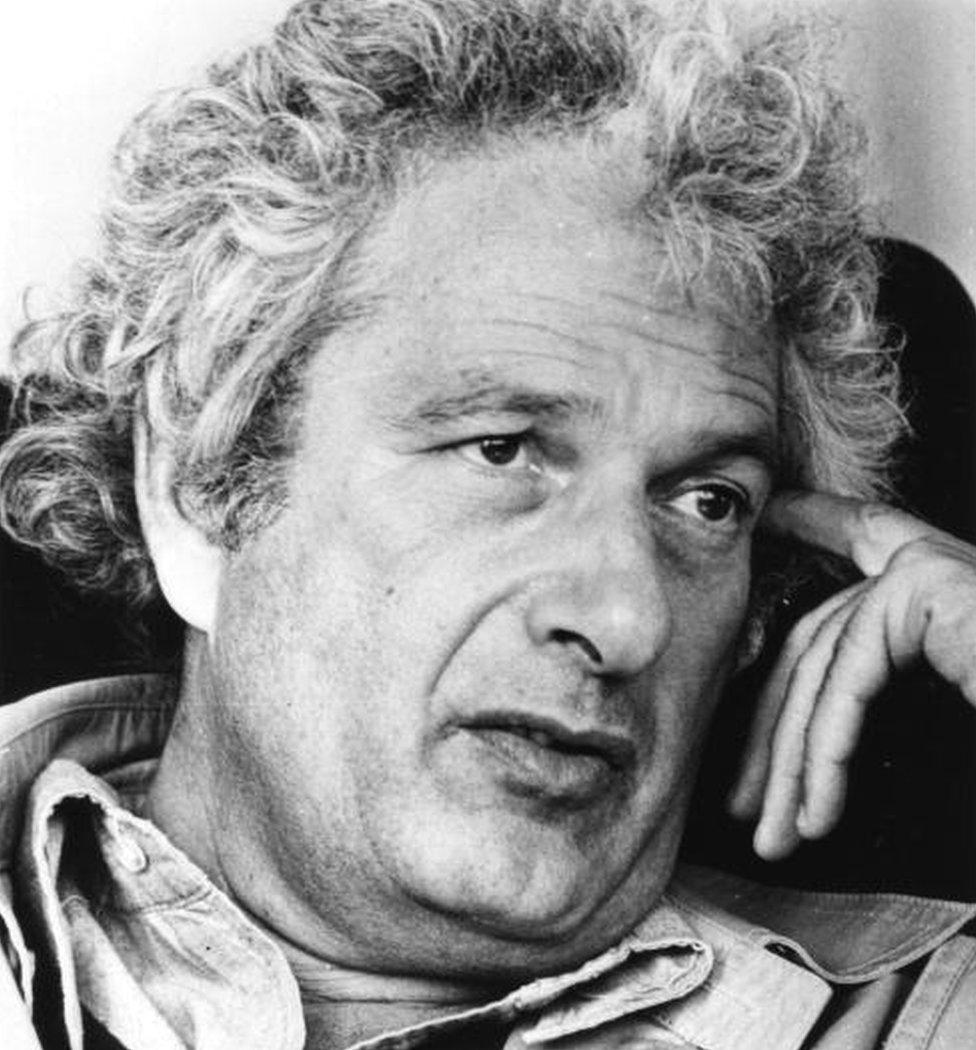
Joseph Heller said "I think the whole society is nuts - and the question is: What does a sane man do in an insane society?"

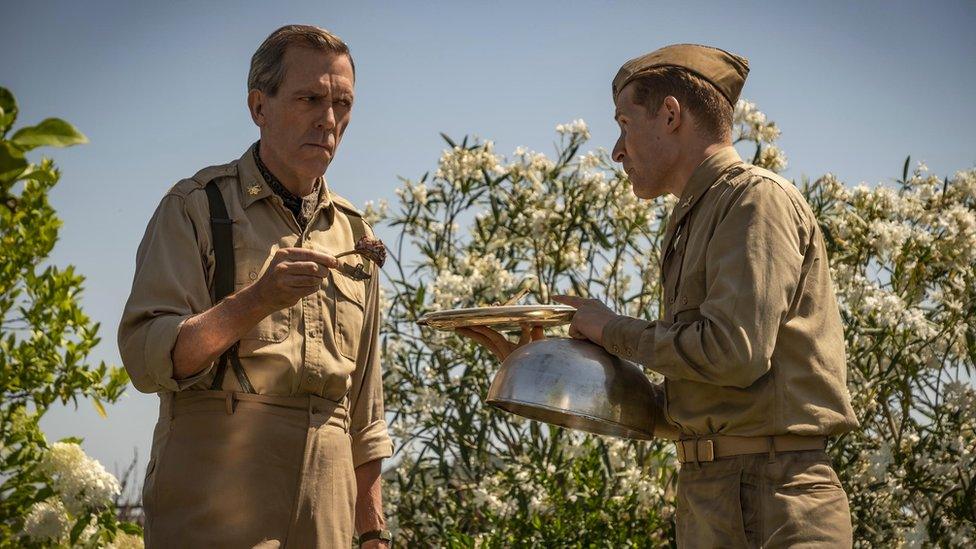
Major de Coverley (Hugh Laurie) is being tempted with a lamb chop by Milo Minderbinder (Daniel David Stewart), so he can be made Mess Officer
His commercial imperatives influence decision-making among the airbase's military leaders, and not - as is their stated aim - military strategy.
Money talks.
And therein lies the crux of the story, it is not simply a question of what matters, but of what matters to whom. Minderbinder knows how to play the system, Yossarian does not.
He is trapped.
Doomed to exist in a never-ending cycle of fear and loneliness.
You can see that in this TV series, but you never actually feel it.
Recent reviews by Will Gompertz
Follow Will Gompertz on Twitter, external
- Published11 June 2019
